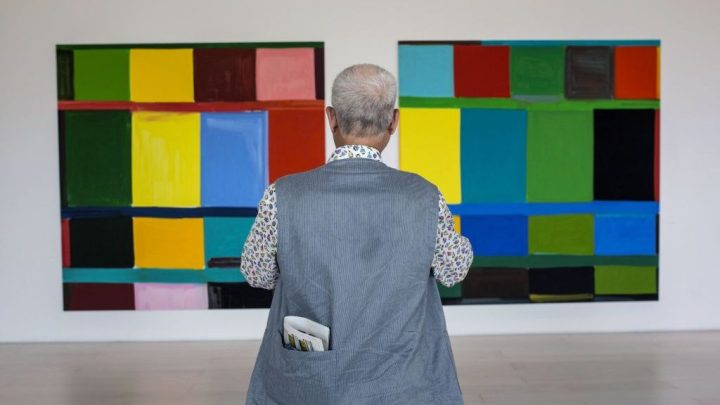
More people are buying art online, but is that making the fine art market more accessible?
More people are buying art online, but is that making the fine art market more accessible?

With a lot more people working from home — and attending Zoom meetings — there’s an appetite for fine art. According to The Art Market Report from Art Basel and UBS, while overall global sales in 2020 were down, online art sales worldwide doubled, and millennials were the fastest-growing demographic of buyers. But did this shift online make the fine art more accessible to underrepresented communities? “Marketplace” host Kimberly Adams spoke with Everette Taylor, the chief marketing officer at Artsy, one of the largest online art marketplaces, about how the art-collecting world is shifting. The following is an edited transcript of their conversation.
Kimberly Adams: With the caveat that so many people lost jobs and income in the pandemic, for those who did have disposable income, a lot of people still wanted to buy art. What did you see at Artsy?
Everette Taylor: Yeah, it was incredible to see. Online sales went up and really saw incredible growth. And I think really the only explanation to that is that people are spending more time in their homes and were looking around, [and] were like, “Hey, this might look pretty good above my couch, or my bed, or in my office.”
Adams: Has that changed the type of art that’s being purchased?
Taylor: Yeah, it’s interesting. You know, Artsy being a tech company, we have all of this data. And time after time, our most in-demand artists, several of them in our top ten, are artists of color now, and not just white male artists. People value different types of art. And there’s an audience out there for them. But you have be able to have the ability and the wherewithal to actually promote that art and give it a platform.
Adams: Artists from underrepresented groups, new artists, there’s a lot of concern about the churn in the market, and people speculating on their art and buying it very quickly, reselling it, and the artists themselves not getting the profit. How does Artsy play into that whole dynamic?
Taylor: Artsy is a platform. We try to equip, you know, our galleries and the artists that are represented by galleries with the tools to be successful, but at the end of the day, you can’t stop people from making bad decisions.
Adams: But Artsy and the other digital platforms are making it easier to do this because it’s faster, people can see the art, they can buy it sight unseen. Do there need to be more guardrails to protect the artist and the galleries?
Taylor: Yeah, but the galleries can still have a buyer’s agreement where, you know, that person can’t sell that art for five years or etc, etc. You know, I’ve bought art plenty of times where I have to sign something that says, “Hey, I can’t flip this work or sell this work for X amount of time.”
Adams: You just mentioned you are a collector yourself. From that perspective, what other changes do you want to see in the art market, overall?
Taylor: Oh, man, there’s so many. I think I want to see it be a more inclusive place and see collectors of color get access to artists of color. It’s like this person is literally painting from a Black narrative, and Black people can’t get access to the work. That’s a fundamental issue. You know, you just talked about like, not having guardrails, but part of not having guardrails is continuing to get to a point of democratization. You know, when you’re opening up that space, it gives a more fair chance for people to gain access to the work ,and you don’t have to necessarily deal with the art world politics.
There’s a lot happening in the world. Through it all, Marketplace is here for you.
You rely on Marketplace to break down the world’s events and tell you how it affects you in a fact-based, approachable way. We rely on your financial support to keep making that possible.
Your donation today powers the independent journalism that you rely on. For just $5/month, you can help sustain Marketplace so we can keep reporting on the things that matter to you.

















